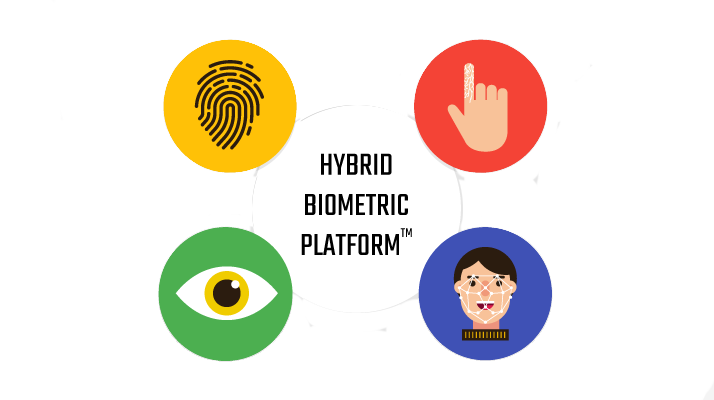Deciding Which Biometric Hardware Device To Use
 OK, so you’ve decided to implement biometric identification technology in your business. Whew, the tough part is done….now, how do you decide which biometric reader is the most appropriate for you to use and will give you the best results? Perhaps one of the most critical decisions you can make when deploying a biometric solution is what the most appropriate piece of biometric hardware is to use. Here is a simple guide to help you to navigate the hardware choices:
OK, so you’ve decided to implement biometric identification technology in your business. Whew, the tough part is done….now, how do you decide which biometric reader is the most appropriate for you to use and will give you the best results? Perhaps one of the most critical decisions you can make when deploying a biometric solution is what the most appropriate piece of biometric hardware is to use. Here is a simple guide to help you to navigate the hardware choices:
Fingerprint is a good solution for many environments
Fingerprint technology is one of the most familiar forms of biometric technology. Although M2SYS provides advanced, revolutionary fingerprint software, using fingerprint biometrics is not always ideal depending on where the technology is used.
The M2-S and M2-EasyScan fingerprint readers provide virtually fool-proof fingerprint recognition. They tend to be most effective when deployed in environments like school lunch line point-of-service, youth membership management, afterschool programs and member authentication. However, they are not always a “one-size-fits-all” solution, so here are some things to ask yourself about your end users when choosing the biometric hardware that is most effective for your needs.
What industry do you work in?
Industries that are geared towards a blue-collar demographic where workers are primarily using their hands with tools or chemicals may be considered less than ideal for fingerprint technology. Cuts, dry skin, scars and other factors can sometimes prevent fingerprint readers from reliably enrolling or identifying a person. These types of environments tend to compromise the integrity of a fingerprint and make it difficult for prints to be captured through a reader.
It is recommended that if you are seeking biometric technology for this type of an environment, consider vascular biometric readers (finger vein and palm vein) instead of where near-infrared light is used to capture the vein patterns underneath your finger or palm and the integrity of your fingerprint is not an issue. Non-invasive, contactless vascular biometric readers scan below the skin’s surface to help ensure a perfect read every time and bypass the need to have a quality fingerprint.
What is the age range of your end users?
When it comes to additional characterizations of your end users to determine the most effective biometric hardware to use, consider their age. It is a biological fact that as we age, our skin tends to become less elastic. Reduced skin elasticity tends to create less than ideal conditions for fingerprint scanning and is not conducive to capturing the quality images needed to successfully use biometric technology.
Similar to our previous suggestion for a blue collar workforce deployment, you may want to consider vascular biometric readers if a majority or all of your end users are geared towards an older demographic. Finger vein and palm vein readers work very well with older users and once again do not need to rely on the integrity of the fingerprint to effectively capture a biometric image for enrollment and subsequent identification.
How is the climate?
What is the climate like where you intend to deploy biometric technology? Is it cold? Warm? Humid? Dry? The integrity of one’s skin is directly affected by the physical environment that surrounds them so if you are deploying biometrics in an environment that is cold which may cause dryer skin and thus compromise the integrity of a fingerprint, you may want to consider using vascular biometric hardware instead of a fingerprint reader. Also please keep in mind that the climate outdoors is just as important as the climate indoors when assessing which biometric hardware reader is best suited to your environment.
Myth – An environment where clean hands are required is ok for fingerprint technology
Consider a healthcare environment for a moment where staff is required to always have clean hands. Seems like this would be ideal for fingerprints because everyone’s hands are always clean, and therefore would produce a higher quality scan for enrollment and subsequent matching, right? Wrong. Washing your hands repeatedly tends to dry out your skin, creating less than ideal fingerprint integrity which may make using fingerprint technology difficult.
Once again, consider vascular technology instead where fingerprint integrity is not a factor for ideal results.
The beauty of Hybrid Biometric Platform – a multi-modal biometrics system
Congratulations, you made it. You analyzed all of the important factors needed to determine which biometric hardware reader will work best for your end users and environment. You asked all of the right questions, dotted all of the i’s and crossed the t’s. Good for you. But, you’re not done. Now comes the time to choose which biometric software you will need to work with your biometric hardware.
The key for choosing a biometric software package is to select one that will hedge against investment risk by allowing you to switch between biometric hardware modalities (i.e. – fingerprint, finger vein, palm vein, and iris cameras) without having to upgrade your software each time. Presto. Hybrid Biometric Platform enables you to tailor your deployment model based on the unique needs of your customers and/or end users, and easily switch between four biometric engines without having to install any new software. This unparalleled flexibility produces near 100% read rates for any user, under any condition, and results in the lowest possible total cost of ownership compared to other options. How fortuitous.
What are some other unique characteristics of your end users that you keep in mind which we may have missed?













Great article!
Many companies don’t realize the importance of choosing the correct device. They mainly go for cost, where they should be considering cost vs praticality.
I am researching the medical industry; Biometrics applications, and it is quite interesting why vein recognition is so much superior to other identification methods.